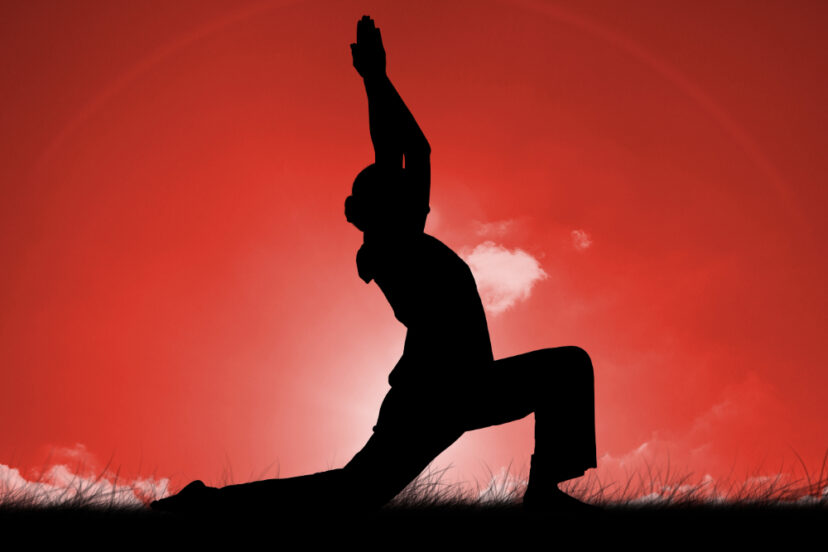Tai Chi & Spirituality: Harmony in Motion
In today’s crazy & unforgiving world, where stress and anxiety seem to be constant companions, Tai Chi emerges as a beacon of tranquility and balance. This ancient Chinese martial art, renowned for its gentle, flowing movements, offers far more than just physical exercise. Tai Chi represents a profound spiritual practice that has transformed countless lives over centuries, helping practitioners discover inner peace and harmony in their daily lives.
The Rich Heritage
The story of Tai Chi begins in the misty mountains of ancient China, where legend tells of a Taoist monk named Zhang Sanfeng who created this remarkable practice. During the 12th century, Zhang observed the fluid movements of nature—particularly a snake and a crane in combat—and was inspired to develop what we now know as Tai Chi. The name itself, Tai Chi Chuan (太极拳), translates to “Supreme Ultimate Fist,” reflecting its deep roots in Taoist philosophy and its emphasis on balancing opposing forces.
As this flourished through the ages, different masters developed their unique interpretations, leading to the emergence of various styles. The Chen style, known for its powerful spiraling movements, gave birth to the more widely practiced Yang style. Later, the Wu and Sun styles emerged, each offering their own approach to this ancient art. Despite their differences, all styles share the same fundamental principles of balance, harmony, and the cultivation of inner energy.
Understanding the Heart of Tai Chi
At its core, Tai Chi is built upon several fundamental principles that distinguish it from other movement practices. The concept of yin and yang—the complementary forces that govern the universe—plays a central role in every aspect of this. Each movement embodies this eternal dance of opposites: soft meets hard, emptiness transforms into fullness, and stillness gives way to motion.
The life force known as Qi (chi) flows through every movement. Practitioners learn to sense and direct this subtle energy through their bodies, promoting health and vitality. The slow, deliberate nature of these movements isn’t just for show—it allows practitioners to develop acute awareness of their body’s energy pathways and enhance their natural flow of Qi.
Mindfulness serves as another cornerstone of this practice. Unlike high-intensity workouts where the mind might wander, Tai Chi demands complete presence. Each movement becomes a moving meditation, requiring practitioners to maintain unwavering focus on their breath, posture, and energy flow. This mindful approach extends beyond the practice session, helping practitioners maintain greater awareness and presence in their daily lives.

The Spiritual Journey Through Tai Chi
Practicing this opens doors to profound spiritual experiences. As practitioners move through the graceful forms, they often report a deepening connection with their inner selves. This self-discovery process reveals aspects of their character they might never have noticed before—their reactions to challenges, their patterns of tension, and their capacity for grace under pressure.
The meditative quality creates a unique state of calm alertness. As practitioners synchronize their breath with their movements, they often experience a profound sense of peace. This isn’t just temporary relaxation—regular practice can lead to lasting changes in how practitioners respond to stress and anxiety in their daily lives.
Many find this helps them develop a deeper connection with the natural world. The movements, inspired by observations of nature, help practitioners feel more attuned to the rhythms of the universe. Whether practicing in a park, by the ocean, or even indoors, this helps bridge the gap between human consciousness and the natural world.
Practical Integration of Tai Chi into Daily Life
The beauty of Tai Chi lies in its accessibility. Unlike some spiritual practices that require specific settings or extended time commitments, Tai Chi can be integrated into daily life with relative ease. Even five minutes of mindful practice in the morning can set a positive tone for the entire day. Many practitioners find that starting their day with simple movements helps them maintain better focus and emotional balance throughout their daily activities.
The practice becomes even more powerful when combined with traditional meditation. After moving through the forms, practitioners often find that their minds naturally settle into a state of deep stillness, making seated meditation more accessible and profound. This combination of movement and stillness creates a comprehensive approach to spiritual development.
Practicing this outdoors adds another dimension to the experience. The fresh air, natural light, and connection with the earth enhance the flow of Qi and deepen the sense of harmony with nature. Many practitioners report that outdoor practice helps them feel more grounded and connected to the world around them.
The Healing Power
One of the most remarkable aspects is its holistic approach to healing. On a physical level, regular practice improves flexibility, balance, and strength. The gentle, low-impact nature of the movements makes it accessible to people of all ages and fitness levels. Research has shown that this can help reduce chronic pain, improve cardiovascular health, and boost immune function.
The emotional benefits of Tai Chi are equally impressive. The practice helps release stored tension and emotional blockages, promoting greater emotional resilience. Many practitioners report feeling more equipped to handle life’s challenges with grace and equanimity. The focus on breath and movement creates a natural state of relaxation that can help alleviate anxiety and depression.
On an energetic level, this works to remove blockages in the body’s energy pathways. These blockages, which can manifest as physical or emotional symptoms, gradually dissolve through regular practice. As energy flows more freely, practitioners often experience improved vitality and a greater sense of overall well-being.
The Modern Evolution
While rooted in ancient wisdom, Tai Chi continues to evolve and adapt to contemporary needs. Modern practitioners often combine Tai Chi with other spiritual practices such as yoga, meditation, or energy healing. This integration creates a rich tapestry of practices that support holistic well-being.
The principles of Tai Chi—balance, mindfulness, and harmony—resonate deeply with modern spiritual seekers. In a world that often feels fragmented and chaotic, Tai Chi offers a path to wholeness and integration. Its emphasis on finding balance between opposing forces provides valuable lessons for navigating life’s challenges.
Many practitioners report experiencing significant personal transformations through their Tai Chi practice. These changes often begin with subtle shifts in awareness and gradually lead to deeper insights about themselves and their place in the universe. The practice becomes a journey of self-discovery, revealing new aspects of consciousness and capability.
Embracing the Spiritual Legacy
The spiritual foundation of Tai Chi draws from both Taoist and Buddhist wisdom. Taoist principles of living in harmony with nature and embracing the flow of life are embodied in every movement. Buddhist concepts of mindfulness and non-attachment find expression in the practice’s emphasis on present-moment awareness and letting go of tension.
In contemporary spiritual communities, Tai Chi has found a welcome home alongside other contemplative practices. Its accessible nature and profound benefits make it an valuable tool for spiritual development. Whether practiced alone or as part of a broader spiritual path, Tai Chi offers a tangible way to experience the unity of body, mind, and spirit.
Tai Chi stands as a testament to the wisdom of ancient practices and their relevance in modern life. More than just a series of movements, it offers a comprehensive path to physical health, emotional balance, and spiritual growth. As we navigate the challenges of contemporary living, Tai Chi provides valuable tools for maintaining harmony and peace amidst chaos.
For those seeking a deeper connection with themselves and the world around them, Tai Chi offers a time-tested path. Through its gentle movements, mindful awareness, and emphasis on energy flow, practitioners can discover new dimensions of their being and experience the profound peace that comes from moving in harmony with the universe.
Whether you’re drawn to Tai Chi for its health benefits, stress relief, or spiritual depth, this ancient practice has something valuable to offer. In a world that often pulls us in many directions, Tai Chi provides a centered path to wholeness and harmony, inviting us to discover the profound wisdom that lies within the simple act of mindful movement.
We may earn a commission for purchases made using our links. Please see our disclosure to learn more.




